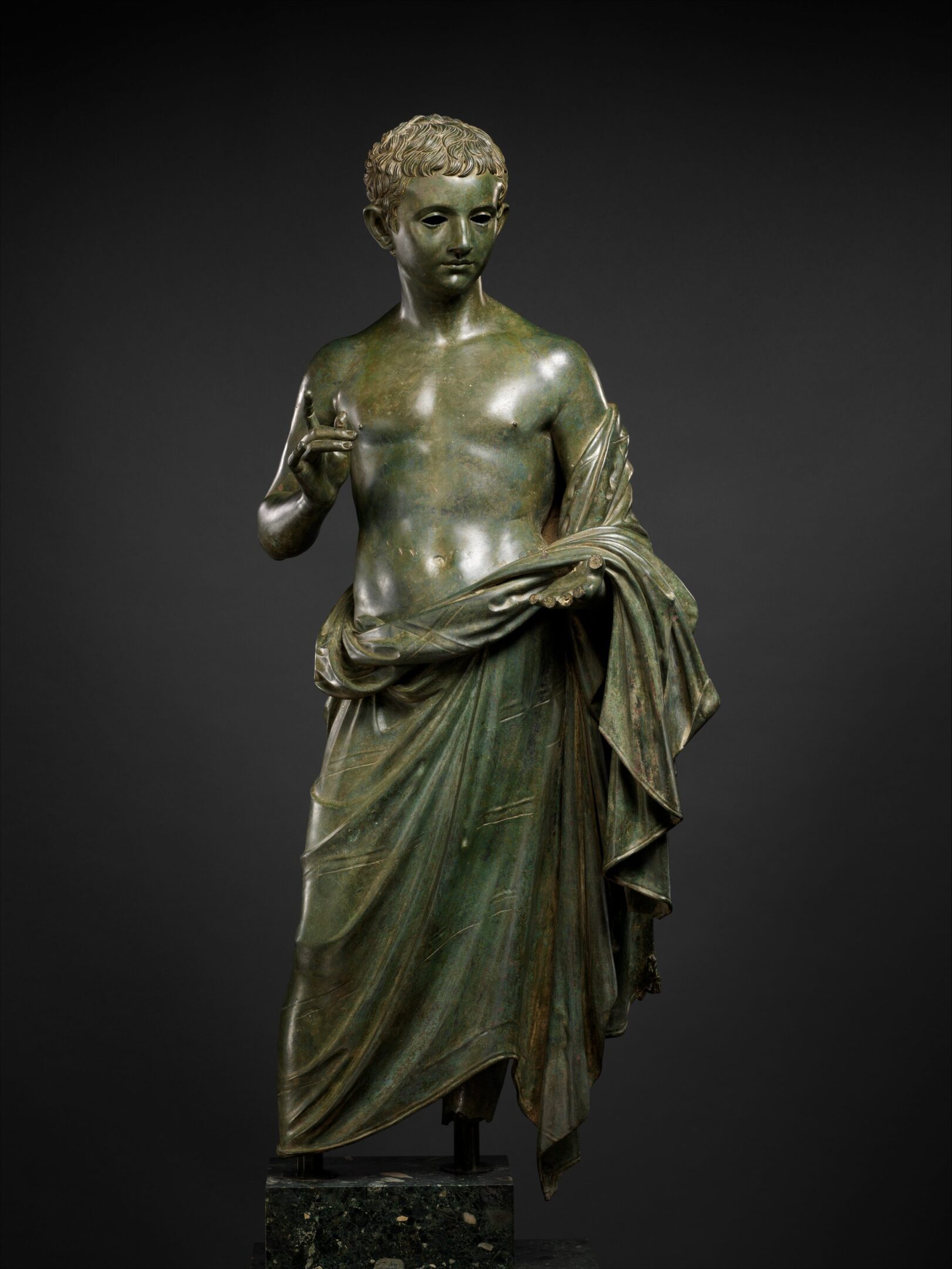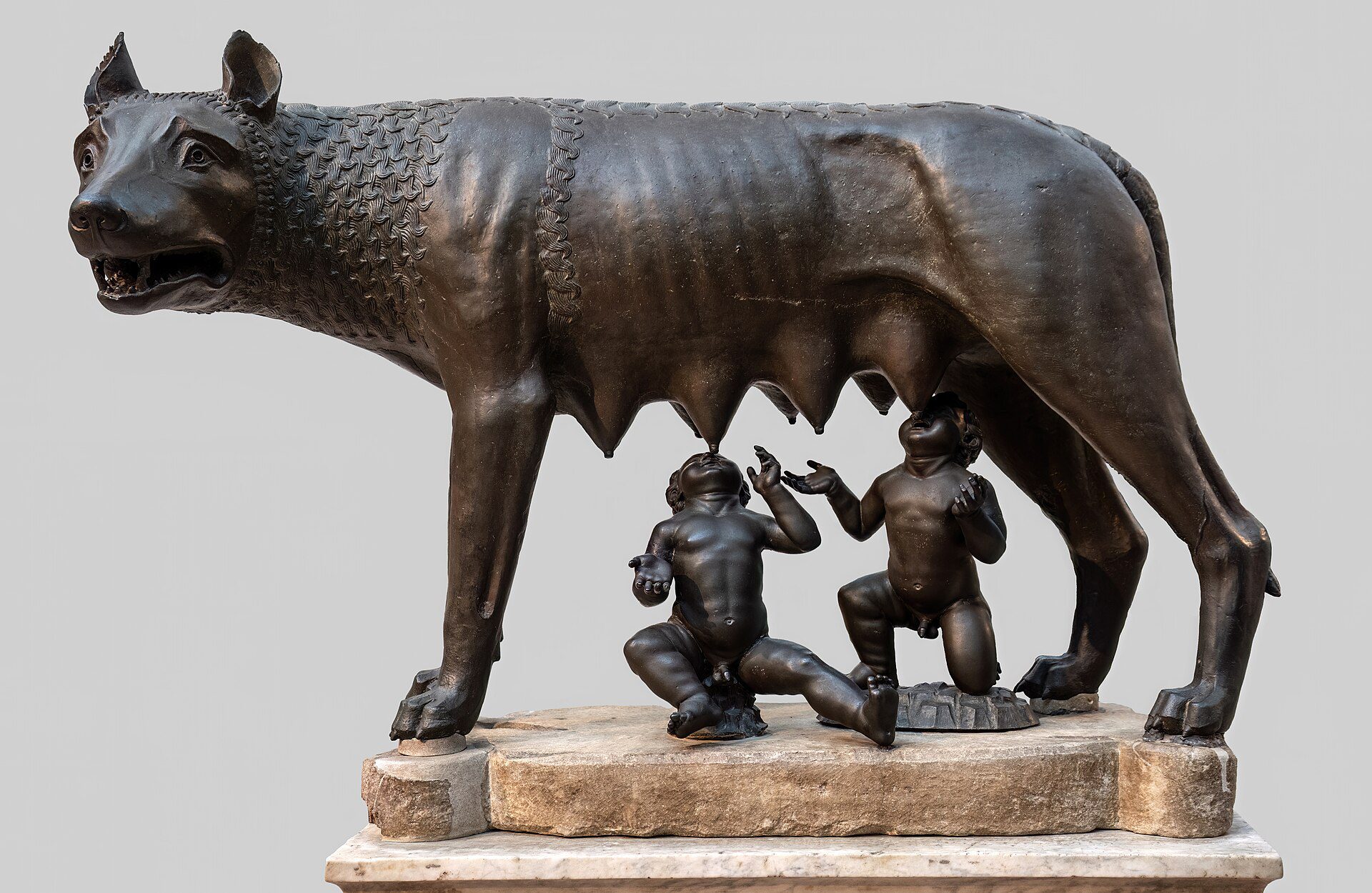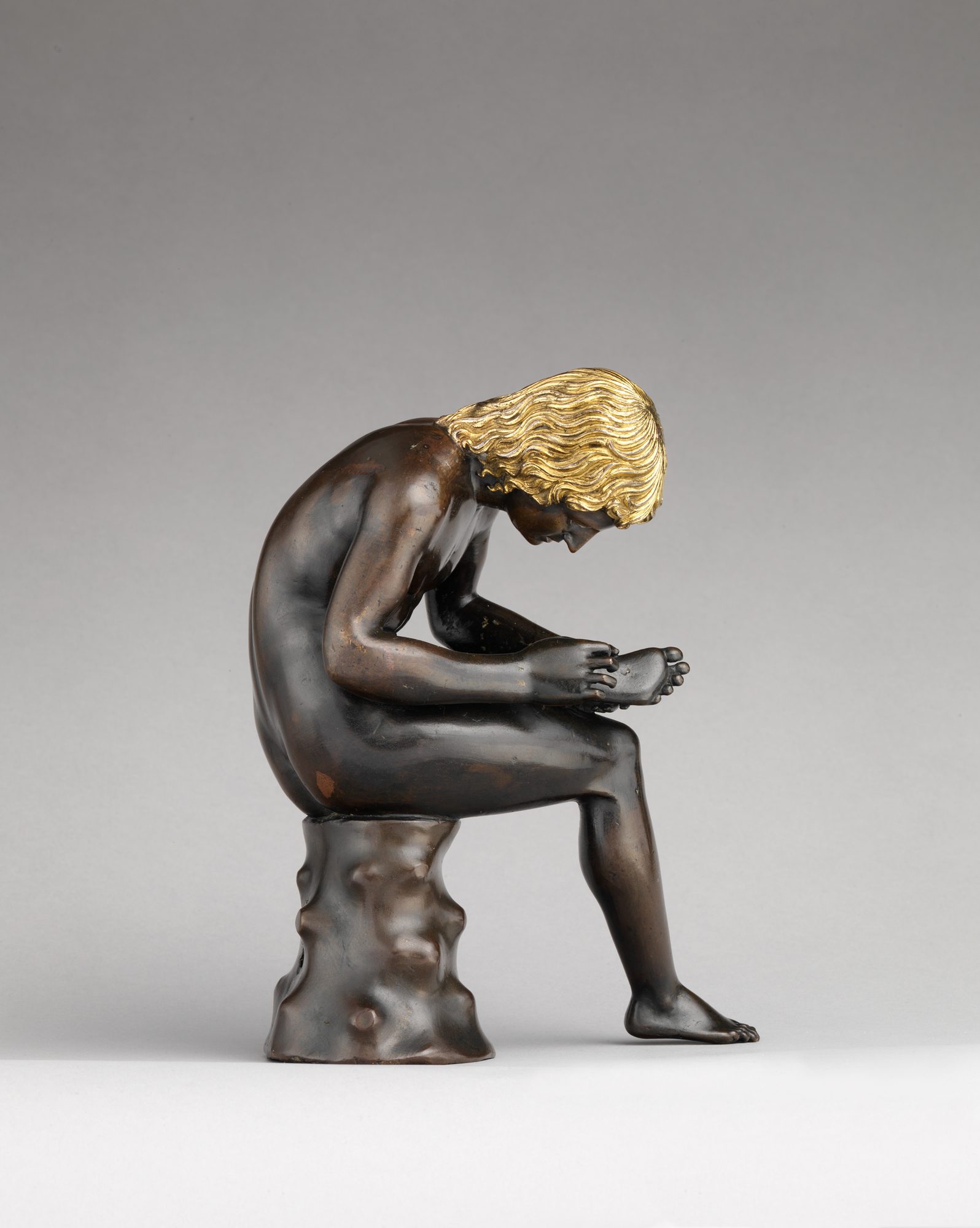Roman Bronze Sculptures 509 BC-337 AD
Roman bronze sculptures from 509 BCE to 337 CE showcase the empire’s blend of artistic realism, political power, and technical achievement. Influenced by earlier Greek art, Roman sculptors used bronze to create lifelike portraits, equestrian statues, and commemorative figures that emphasized individual identity, civic virtue, and imperial authority. Notable works like the Capitoline Wolf and the Equestrian Statue of Marcus Aurelius display both symbolic grandeur and meticulous craftsmanship.
Bronze’s durability and ability to capture fine details made it ideal for public monuments and personal likenesses, with portrait busts often highlighting wrinkles, expressions, and age to reflect wisdom and experience. Roman bronze sculpture served not just as decoration, but as a lasting testament to Rome’s ideals, legacy, and control.



